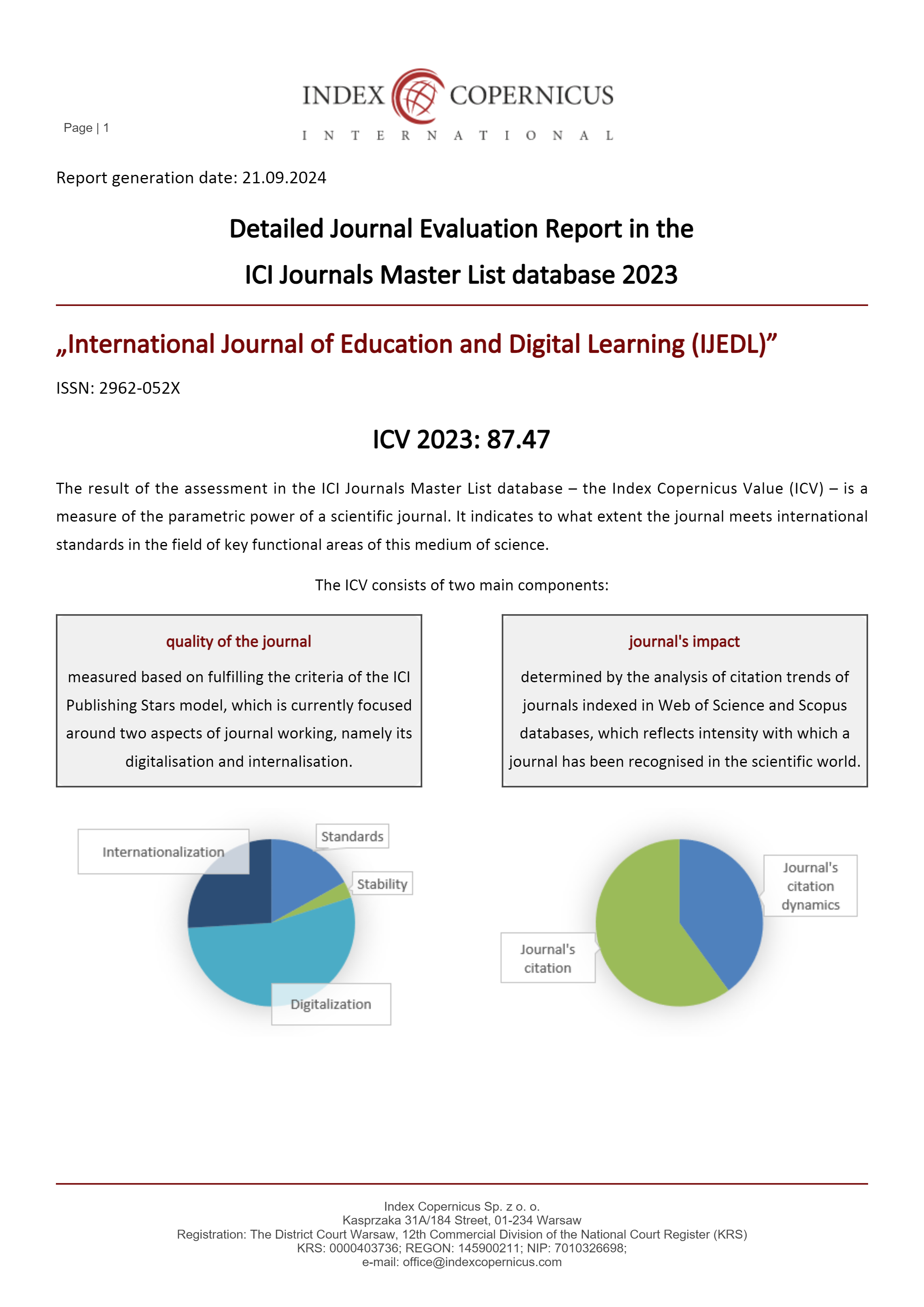Increasing Global Access to Education with Digital Technology
DOI:
https://doi.org/10.47353/ijedl.v3i4.259Keywords:
Digital Technology, Global Education, Digital Divide, Online Learning, MOOCsAbstract
Digital technology has significantly transformed the educational landscape, increasing access to education worldwide. With the rapid growth of the internet, mobile devices, and online platforms, education is no longer confined to traditional classrooms. This article explores how digital technology has opened new avenues for learning, especially for underserved populations and regions with limited educational infrastructure. By focusing on online learning platforms, Massive Open Online Courses (MOOCs), and mobile learning applications, the article examines how digital tools are democratizing education and bridging the global education gap. Additionally, the paper discusses the challenges and barriers that still exist, including digital divides, lack of infrastructure, and teacher preparedness, while also highlighting successful initiatives and case studies that have increased educational access. By leveraging the power of digital technology, education can become more inclusive, flexible, and equitable, ensuring that people from all backgrounds have the opportunity to learn and grow. The article concludes with recommendations for policymakers and educators to enhance the global impact of digital education.
Downloads
References
Allen, I.E., & Seaman, J. (2016). Online learning in the United States: 2016. Babson Survey Research Group.
Allen, I.E., & Seaman, J. (2017). Digital learning in K-12 schools: 2017 survey. Babson Survey Research Group.
Christensen, C.M., Horn, M.B., & Staker, H. (2013). Disrupting class: How disruptive innovation will change the way the world learns. McGraw-Hill.
Duolingo. (2020). Language learning made fun. Retrieved from https://www.duolingo.com
Garrison, D.R., Anderson, T., & Archer, W. (2000). Critical thinking, cognitive presence, and computer conferencing in distance education. The American Journal of Distance Education, 15(1), 7-23. https://doi.org/10.1080/08923640009527071
Khan Academy. (2020). Free online courses. Retrieved from https://www.khanacademy.org
Online Learning Consortium. (2019). The impact of online learning in higher education. Retrieved from https://onlinelearningconsortium.org
Pew Research Center. (2019). Smartphone ownership and internet usage in developing countries. Retrieved from https://www.pewresearch.org
Puentedura, R.R. (2013). SAMR: An introduction. The International Society for Technology in Education (ISTE).
Reich, J. (2014). The MOOC phenomenon: Who takes online courses and why? Educational Policy, 58(3), 1-25.
Siemens, G. (2005). Connectivism: A learning theory for the digital age. International Journal of Instructional Technology and Distance Learning, 2(1), 3-10.
Tondeur, J., et al. (2017). The influence of school leaders on teachers’ technology integration. Journal of Educational Computing Research, 55(4), 453-475. https://doi.org/10.1177/0735633116669467
Warschauer, M. (2004). The integration of information and communication technologies into education: A curriculum-based approach. The Journal of Educational Computing Research, 31(4), 343-358.
WISE. (2020). The rise of online education and its potential to transform global learning. World Innovation Summit for Education. Retrieved from https://www.wise-qatar.org
Zawacki-Richter, O., et al. (2009). Systematic review of research on online teaching and learning. International Review of Research in Open and Distributed Learning, 10(1), 1-23.
Downloads
Published
How to Cite
Issue
Section
License
Copyright (c) 2025 Huzaiman Hushin

This work is licensed under a Creative Commons Attribution 4.0 International License.













